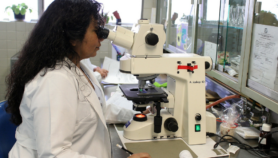By: Wagdy Sawahel
Send to a friend
The details you provide on this page will not be used to send unsolicited email, and will not be sold to a 3rd party. See privacy policy.
The Middle East and North Africa are perfectly placed to play a leading role in the lucrative future solar power industry, says a report released last week (7 October).
The report, by Greenpeace, the European Solar Thermal Power Industry Association and the International Energy Agency’s SolarPACES programme, says that by 2025, the industry will attract nearly US$20 billion a year in investment, employ 54,000 people, and have avoided the emission of 362 million tonnes of carbon into the atmosphere — roughly what Japan emits each year.
The projections are based on anticipated advances in solar technology and the expectation that countries will increasingly adopt it due to concerns about climate change and energy security.
The report says that in 20 years, solar power could provide the same amount of electricity as 72 coal-fired power stations. This is enough to supply 100 million people, or the combined populations of Algeria, Morocco, Israel and Tunisia. By 2040, solar thermal power plants could supply five per cent of global electricity demand.
It calls for political and economic support to create energy markets that are “a level playing field in which economic and environmental benefits of solar thermal power can exploited”.
The report recommends that countries incorporate renewable energy targets into national laws to help create a stable environment for long-term investors in solar power.
Scott Sklar, former executive director of the US-based Solar Energy Industries Association, says the report’s conclusions could even be “a bit conservative”.
The market for energy produced by photovoltaic solar cells is growing more than 30 per cent per year, so “it is quite likely that they will displace far more coal plants than Greenpeace predicted”, Sklar told SciDev.Net.
Exporting solar energy
The report says countries such as Algeria and Morocco could one day be exporting solar energy to markets in Europe, as they will soon be connected to European energy networks.
Sabry Abdel-Mottaleb, former director of the Photoenergy Center at Egypt’s Ain Shams University agrees that solar power has the potential to contribute to sustainable development in the Middle East and North Africa.
Abdel-Mottaleb said that ever-rising fuel costs, problems of availability, combined with the threat of climate change meant that solar power, which is clean and cost-effective, is becoming the most economical option for both industrialised and developing nations.
China’s first solar power station is due to be connected to the country’s power network by the end of 2005 and Egypt’s first solar power plants will be connected to the local network in 2007.













